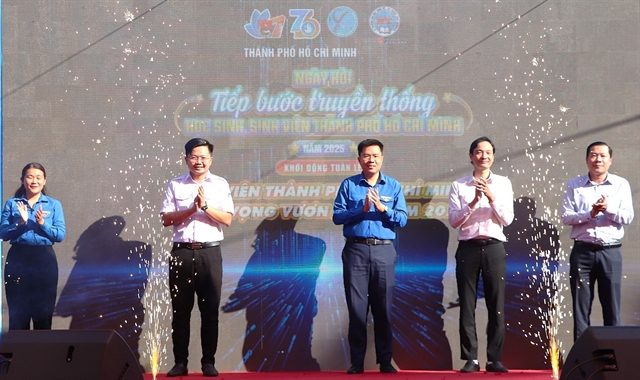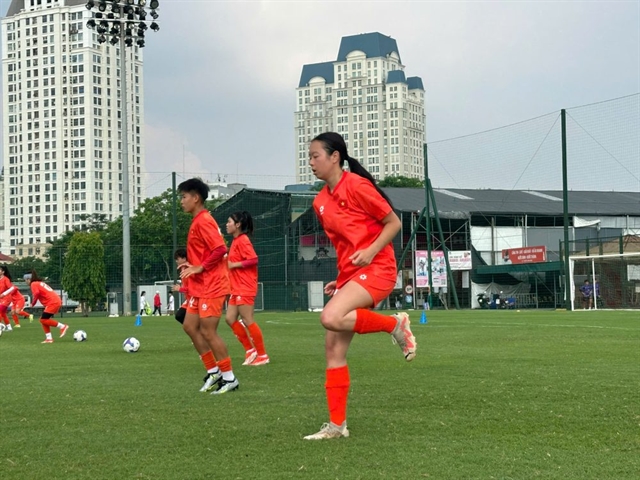 Sports
Sports


|
| Linda Phạm, a heritage player born in the Netherlands, during training with the Việt Nam national under-20 womens' football team. Photo courtesy of VFF |
Anh Đức
In a recent press conference at the ASEAN Women's Championship, Việt Nam's coach Mai Đức Chung voiced reservations about fielding too many naturalised players in the women’s squad, arguing that such policy could skew team cohesion and blunt developmental pathways, and even proposed a limit of naturalised and heritage players in ASEAN women's football competitions.
While unity and home-grown nurturing must remain central, dismissing Việt kiều and naturalised talent outright risks limiting growth, and inspiration, during a pivotal time for the game.
Let’s start with the case of Linda Phạm, the Dutch-born midfielder currently on trial with the U20 women’s national team. VFF and coach Okiyama Masahiko embraced her candidacy, praising the fresh energy and competition she brings to a squad hungrier than ever, despite her limited Vietnamese language skills. The reception from teammates has been encouraging, reinforcing that her international background is an asset, not a liability.
Yet, Chung has pushed back on swift elevation of heritage players. He cited the case of Việt kiều forward Nguyễn Hoàng Nam Mi, who was invited but then dropped due to an insufficient performance. His message: international pedigree isn’t a substitute for readiness and fit within the team philosophy. That caution makes sense; competence must drive selection.
A familiar parallel exists in the story of Eniola Aluko. Born in Lagos, Nigeria, Aluko moved to England as an infant and rose through the ranks to become one of the country’s most capped stars, with 102 caps between 2004 and 2016. She played for Chelsea and Juventus, before transitioning into football leadership roles. Her decision to represent England, though all her roots remained in Nigeria, did not derail team cohesion, it enhanced their competitive fire and inspired generations of young players with her professionalism and resilience. Her story underlines that heritage is not a shortcut, but a potential turbo-charge when mated with preparedness and merit.
That’s the model Việt Nam should consider. Heritage players must earn their place, but they deserve a fair shot. Linda may not yet be first-choice, but she’s being assessed on field ability and attitude, not origin.
Meanwhile, Việt Nam’s regional rivals are not holding back on such options. Philippines, a significant footballing competitor, fields multiple heritage players in their squad, a dual-citizenship strategy that adds depth and variety to their lineup. Indonesia has absorbed heritage players with ease, subtly enhancing strength and tactical reach. Rejecting similar opportunities may inadvertently cede ground to neighbours advancing fast.
Coach Mai Đức Chung’s attention to team chemistry is noble, but letting anxiety about identity slow integration risks isolating Việt Nam from the evolving football landscape. It’s not about swapping veterans for newcomers but including committed players ready to contribute.
A balanced approach would allow heritage stars to participate in trials, training camps, and developmental matches. Monitor and measure, not dismiss. If Linda, or future heritage players, prove adaptable, tireless and they are tactically aligned, exclude them from bias, include them based on capability.
Vietnamese women already compete at high levels, gaining wins in the Asian Cup qualifiers, dominating Southeast Asia. But the road ahead, towards World Cup qualification, demands resourcefulness, courage and occasional leaps of faith. Holding back potential assets because they bring a different background risks shrinking the team’s wings.
Ultimately, success in women’s football won’t come from conservatism. It comes from openness, from giving every eligible player, heritage or local, a resolve to prove herself. That is how legends are born, how teams evolve, and how a nation’s football hopes are truly reignited. VNS